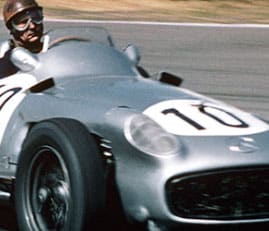Aintree, Liverpool, July 21st.
In spite of a lot of protests the R.A.C. once again delegated the British Grand Prix to the B.A.R.C., the second time in succession, so that the Grand Prix circus had to journey to Liverpool to race at the Aintree Stadium. After the victories by Cooper at Reims and Porsche at Rouen, as well as Porsche at the smaller Solitude meeting, everyone went to Aintree in a very keen frame of mind, knowing that the whole situation was very open. The Italian strikes having eased a bit, the Scuderia Ferrari fielded a lone car for Phil Hill, this being the one tried out in practice at Monaco, with the gearbox ahead of the differential housing, but still using the 1961-type 120-degree V6 engine, their other two entries being withdrawn. The two flat 8-cylinder Porsches for Gurney and Bonnier were as raced at Solitude, except that they were now both using Koni shock-absorbers, whereas one had been on Koni and the other on gas-filled Bilstein shockers previously. Graham Hill and Ginther had their usual B.R.M. V8 cars and there was a brand new spare car identical to Ginther's as regards the chassis frame at the rear, Hill's still having the prototype chassis frame with different tube arrangements to support the gearbox. McLaren and Maggs had the two identical Cooper-Climax V8 cars and Clark and Taylor had the two Team Lotus cars that they used at Solitude, Clark on the "monocoque" Type 25 and Taylor on the Type 24. The Bowmaker team had their two usual Lola-Climax V8 cars for Surtees and Salvadori and a brand new car as spare. In basic layout it was the same as the other two cars, incorporating all the successful modifications made since the start of the season, plus a few more, notably the front suspension uprights and stub axles. Instead of being a modified proprietary component the uprights were now fabricated from steel sheet in taper-tube form, like the Ferguson P99, and the stub axles were of large diameter tubing like the Lotus 24 and 25. The wishbone ends and steering pivots were also improved and strengthened, but the top suspension link has reverted to channel section as used on the original car. A 6-speed Colotti gearbox was fitted, with a right-hand gearchange which necessitated a cross-over linkage behind the gearbox as the 6-speed Colotti has the selector mechanism on the left. Rob Walker had to withdraw his entry as the car was written-off at Rouen and Brabham ran his Lotus-Climax V8 as the F.1 Brabham-Climax V8 was not quite ready. Although it could have been made a runner in time for the race it would have meant that it was completely untried and Brabham wisely decided not to use it. After Rouen the U.D.T.- Laystall team were not happy with the B.R.M.- engined car so they entered their two Lotus-Climax V8 cars, Ireland having the newest of the two, and Gregory's car having additional bracing struts across the engine bay. That completed the entry of works or semi-works teams and the rest of the field was made up of private entries. On Cooper-Climax 4-cylinders were Lewis and Burgess, on old Lotus-Climax 4-cylinders were Chamberlain and Shelly; Settember had a lone Emeryson-Climax 4-cylinder and de Beaufort had his 4-cylinder Porsche. Campbell-Jones was a non-starter as he was still suffering from his Solitude accident, and the car was badly wrecked, Greene hoped his new Gilby-B.R.M. V8 would be finished in time but it was not, and Siffert scrubbed his entry after hearing the measly starting-money offer made by the B.A.R.C. A last-minute arrival was Seidel with his brand new Lotus-B.R.M. V8.
Practice began on Thursday afternoon with one hour immediately after lunch and the Stadium was bathed in glorious sunshine, though a strong headwind on the railway straight was not conducive to fast lap times. In April Clark had set a new Aintree lap record in 1 min. 54.0 sec. in a Lotus 24 but the headwind put paid to much hope of improving on this. Porsche and B.R.M. were all set to go, Graham Hill having upswept megaphone exhausts and Ginther having downswept stub pipes with no venturi tail-pipes. McLaren's Cooper was present but the other V8 was delayed, its transporter having broken down on the way, so that Tommy Atkins' mechanics had to travel up from London, collect the car and bring it on, arriving too late for this first session. Eric Broadley was finishing off the brand new Lola, which was running with the letter T for recognition, and soon most competitors were circulating. Gurney was in fine form and charging along, braking very late for Melling Crossing, and Surtees tried the new Lola but was having trouble finding gears so left it at the pits to be adjusted and continued practising in his old one. Having spent a day at Goodwood sorting out the U.D.T. cars Ireland was driving very fast, while Graham Hill was not hanging about, that is until his engine blew up. Team Lotus were not in a very happy state and Clark was not leading the running, which was unusual. Unfortunately the timekeepers were still using "egg timers" with only one-fifth second divisions, so that official times gave lots of dead heats!





